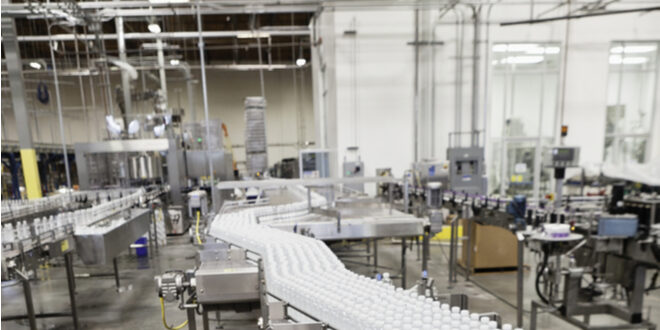February was one of the best months ever for manufacturing in Riverside and San Bernardino counties, and all signs point to continued improvement. The battle hasn’t been won, but the worst of the crisis, – at least for the local manufacturing sector – could be in the past.
It might be time to stop speculating on how much damage COVID-19 might do to manufacturing in the Inland Empire. The answer might be no damage at all.
Despite concerns that began when the pandemic started one year ago, the region’s manufacturing appears to have withstood the storm, according to the Institute of Applied Research and Policy Analysis at Cal State San Bernardino.
On the first working day of every month, the institute publishes its Inland Empire Report on Business, a detailed analysis of manufacturing, and the economy, in Riverside and San Bernardino counties.
The report, usually about eight pages, includes the purchasing managers index, which determines whether manufacturing is growing or regressing in the two-county market. An index of 50 or above means it’s growing, less than 50 that it’s getting smaller.
Three consecutive months in either direction is needed to establish a trend.
February’s numbers, released last week, could not have been better. The index for the second month of 2021 was 63.9, a major jump from the 51.5 recorded in January and the sixth consecutive month that number has been above 50.
Last month’s index was historic. Since it was first published in 1993, the index has topped 60 only 19 times, with six of those happening in the last two years.
February’s purchasing managers index was the second-highest ever recorded in the business report’s 28-year history. That would be an achievement in any economy, but in a pandemic that has caused much of the economy to slow down, it’s particularly impressive.
“The local manufacturing sector and the economy are clearly in growth mode,” the report declares, perhaps understating the market’s health at the moment.
Broken down by category, virtually everything is moving in the right direction. Production, new orders, inventory and employment were all up month-over-month in February, with most categories growing faster than they were one month ago.
Supply deliveries slowed between January and February, but that’s a good thing, because slower deliveries means there’s more to deliver.
Even the purchasing managers, normally a cautious group, were optimistic. Thirty five percent of those surveyed said they expect the local economy to get stronger during the next three months, and 50 percent said they expect it to stay the same. Only 15 percent said they expect it to get weaker.
That kind of optimism bodes well for the future, even though the pandemic is far from over and there are genuine fears about a resurgence because of mutant strains of COVID-19 that are developing, said Barbara Sirotnik, director of the institute and one of the business report’s co-authors.
“The index doesn’t get above 60 very often, so maybe I was a little surprised by that,” Sirotnik said. “But I thought we would stay above 50. I agree with the purchasing mangers who say that the Inland economy will continue to improve, as long as something unforeseen doesn’t happen. Right now, the only downside I’m seeing [with the economy] is some prices are going up.”
The Inland region’s commodity price index did rise substantially last month, from 71.2 in January to 82.1 in February, the only negative statistic in the report. Only six times in the business report’s history has the commodity price index been that high.
For months, the eight-page study has begun not with a breakdown of the manufacturing sector in Riverside and San Bernardino Counties but with the latest COVID-19 news, February’s report notes that California has more COVID-19 cases and COVID-19-related deaths than any other state, and that Los Angeles County – the largest county in the state – leads California in those two categories.
“Experts agree that the economy cannot recover until COVID-19 is under control,” the February report states. “That is why we have begun our report with these types of grim COVID statistics for the past many months.”
COVID-19 is still a concern despite the recent drop in cases nationwide brought on by the vaccinations, said Soua Vang, San Bernardino County’s interim economic development director.
“We are extremely encouraged by the positive numbers in this latest report. However it might be premature to say we are out of the woods when it comes to the impact of the pandemic,” Vang said in a prepared statement. “Right now the county is hyper-focused on vaccinations. The positive momentum in testing and vaccinations should continue to bode well for the manufacturing industry, and be a strong signal to the business leaders that they can focus on business development.”
One Inland manufacturer hasn’t experienced a slowdown since the pandemic started.
“I wasn’t surprised, because we’re one of the businesses that made that index get as high as it did,” said Bud Weisbart, founder and co-owner of A&R Tarpaulins in Fontana.
A&R makes heavy duty tarps for aerospace and the military. Since the pandemic began its business has never slowed down.
“There are 10 months left in 2021, and we’re about half a million dollars away from our break-even point,’’ Weisbart said. “During the next six months, I expect us to go through the roof.”
 IE Business Daily Business news for the Inland Empire.
IE Business Daily Business news for the Inland Empire.



I am very disappointed.I am over 55 on disability with underlying conditions and the internet will not let me sign up for my shot or shots?What is the reason for that now?